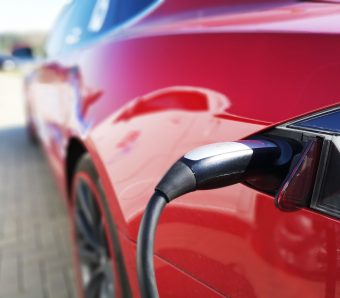
Contrary to all expectations, the year 2020, gloomy as was to all, caused so much trouble that we were impatiently waiting to “see it vanish”, yet had one bright spot. Once the COVID-19 pandemic peaked, shook the world economy, and challenged most companies to the bitter end, it turned out that the electric car market was hiding a secret.
Although the sales of electric vehicles did not pose as a priority when the economic crisis drastically reduced the financial power of the majority, statistics show that sales of battery-powered cars in 2020 soared by as much as 41 percent compared to the far more stable 2019.
A report issued by the International Energy Agency (IEA) shows that around 3 million electric vehicles were sold in 2020 worldwide, with Europe surpassing China for the first time, with the latter dominating until recently as the largest market for battery-powered cars worldwide.
The year we will remember after the pandemic was surprisingly good for electric two-wheelers. Hence the double number of electric bicycles in the USA in 2020 compared to 2019, while electric scooters were somewhat more in demand in Europe.
It is stimulative to see that more and more cars are running on batteries every year, and it seems that even the global economic crisis has failed to affect the growing progress of electrification of mobility.
In focus:
Why is the popularity of electric vehicles growing?
Subsidies are the main reason for the successful influx of electric four-wheelers on the market. According to the IEA report, governments worldwide have spent 14 billion dollars to support the sale of electric cars, which is 25 percent more than in 2019.
European governments offered a series of stimulative measures that provided the desired outcome so that in 2020, the milestone of as many as 1.4 million electric vehicles sold in Europe was reached, while in China, the number was a mere 1.2 million, and the United States trail with 295,000 units sold.
It turned out that in Europe, the fans of electric four-wheelers mostly live in the Scandinavian countries. Norway is the undisputed leader because 75 percent of the total number of cars seen on the streets is electric, although Iceland is not far behind with 50 percent and Sweden with 30 percent.
Although Serbia still cannot boast of a significant share of electric vehicles, the Serbian Government is determined to help develop electromobility by providing subsidies for the purchase of environmentally-friendly vehicles. This year, potential buyers were able to apply for help of 250 euros for mopeds and light tricycles, 2,500 euros for hybrid cars, 3,500 euros for plug-in hybrids, and 5,000 euros for electric vehicles. In the years to come, the Government is expected to offer new subsidies and that the number of battery-powered vehicles will gradually increase.
Prepared by: Milena Maglovski
Read the story in the new issue of the Energy portal Magazine RECYCLING.



